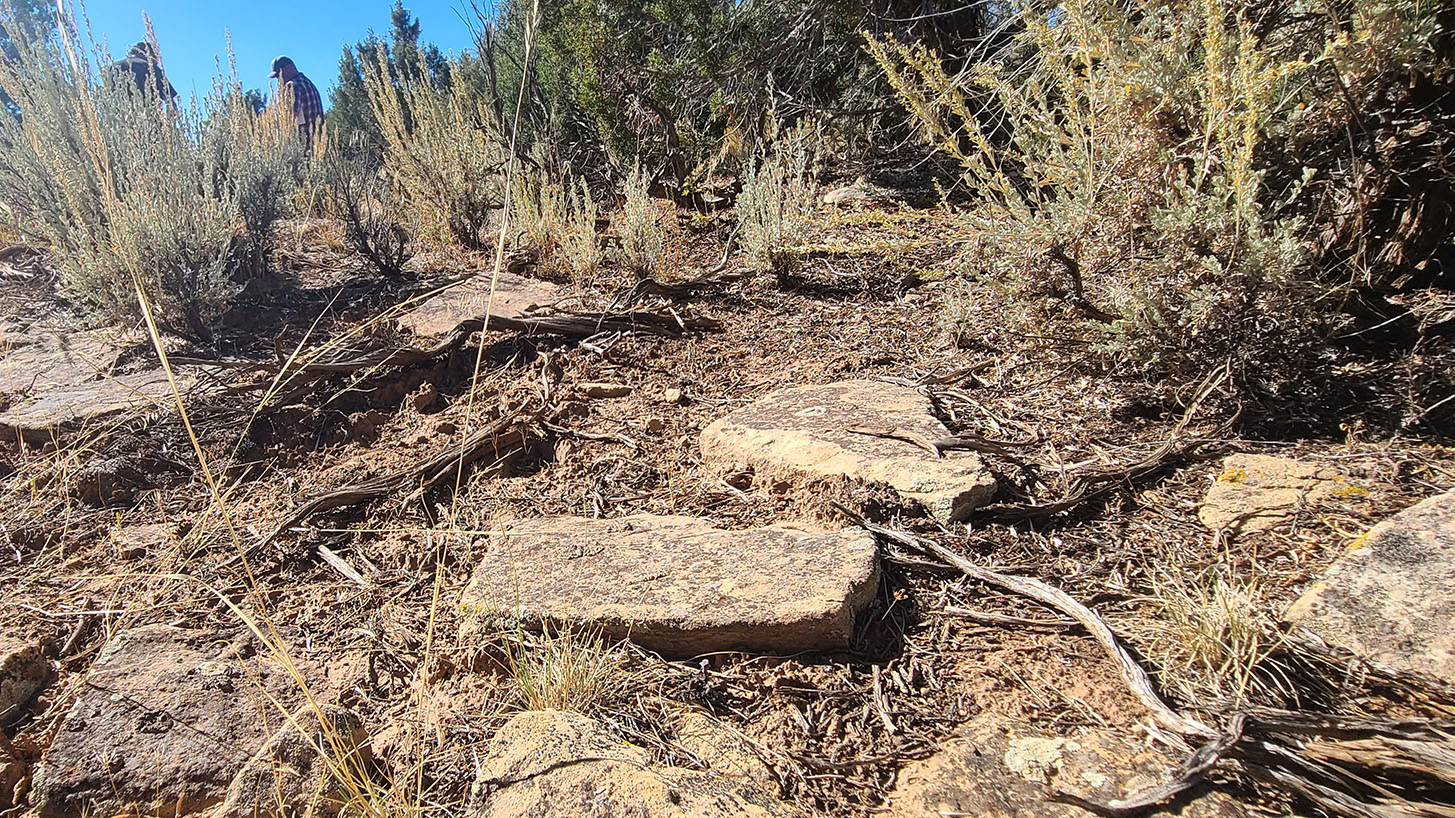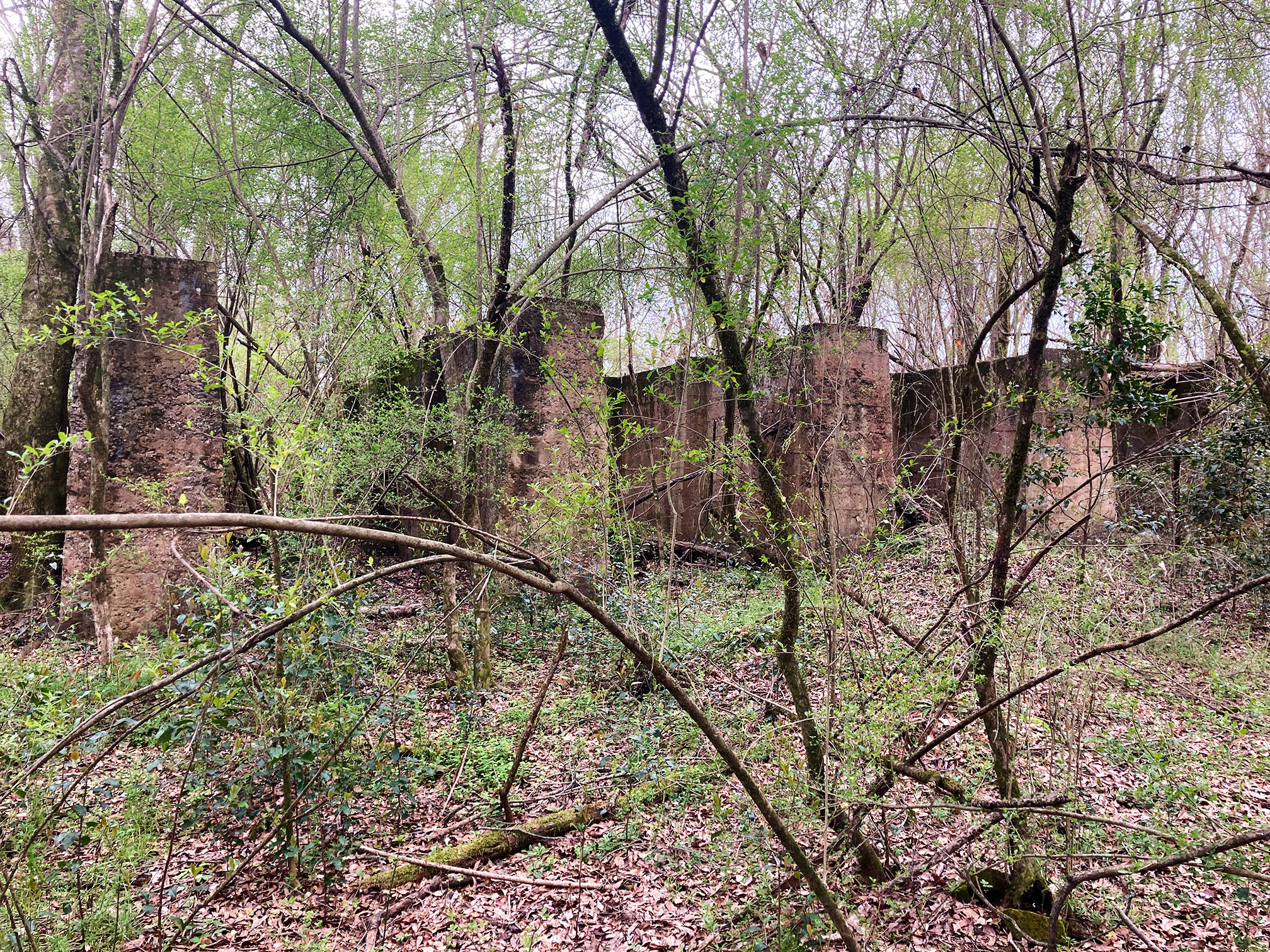The Knuckles site is a Pueblo I (A.D. 750-950) village site near Cortez, Colorado. The landowner discovered the site when he was clearing his field for planting, finding stacked stone and pottery sherds. He contacted an archaeologist at Crow Canyon Archaeological Center who confirmed by surface survey and later by Lidar imagery that it was a Pueblo I village site buried on approximately 40-acres of land.
During his surface survey, the archaeologist found the remains of various architectural features and numerous pottery assemblages. He estimates that there are about 14 separate room blocks with approximately 480 surface rooms that may have housed up to 600 people during its height. If the rooms were occupied contemporaneously, this would make the Knuckles site one of the largest Pueblo I villages in the central Mesa Verde Region. In the southern portion of the site there is a possible great kiva next to an oversized pit structure with unusual features - a u-shaped roomblock facing north along with some wall alignments that appear to segment the household space. There is also a potential dam and reservoir at the site which, if confirmed, would be one of the oldest examples in the region. Surface pottery indicates that the site was built in the mid to late A.D. 800s with limited occupation into the A.D. 1000s. There is evidence of later construction in the southern portion of the site, but further investigation is needed to confirm the construction dates.
The Knuckles site has not been formally recorded, excavated, or researched, giving it extraordinary research potential. It is located about two miles from another Pueblo I site and shares some interesting similarities. Both sites have roomblocks oriented along a north/south axis, a great kiva in the southeast portions, and were occupied during the same period. Further research at the Knuckles site could shed light on the social connections between these two sites and lead to a better understanding of regional population dynamics and social interactions during this period.
The landowner was eager to see the site preserved and offered to subdivide the 40-acres containing the Knuckles site and sell it to the Conservancy for $90,000. After officially recording the site, the Conservancy will map and fence it and plan for future research.

Fort Leslie sits on a 13-acre tract of land in Alabama and contains a portion of historic Fort Leslie, a Creek War fort, and the Talladega Blast Furnace, which was built in the late 1800s. During the Creek War in 1813, a stockade was built around a trading post to protect both Creeks and settlers who had allied themselves with the United States. It became known as Fort Leslie and played a pivotal role in the Battle of Talladega. On November 9, 1813 Fort Leslie was surrounded by a group known as the Red Sticks, a faction of Muscogee Creek people who resisted assimilation. At the time, Andrew Jackson and the Tennessee Militia were camped about 30 miles away at another fort. Legend has it that someone slipped out of Fort Leslie dressed in hog skin, passing through hundreds of Red Sticks unnoticed, and made his way to inform Jackson about the situation at the fort. The militia arrived later that evening and defended the fort. At the end of the battle, an estimated 300 Red Stick Creeks and 18 U.S. soldiers had died.
After the Treaty of Cusseta on March 24, 1832 in which the Creeks ceded the remainder of their land east of the Mississippi to the U.S. government, the former territory was advertised for sale. The treaty granted 320 acres to Joseph Bruner, the first African American to own land in Alabama, for his services as an interpreter during the Creek War. The rest of the land grant was eventually donated for a town site in 1834 which became the town of Talladega in 1835. The Talladega Furnace was built on the site of Fort Leslie in 1888. The 72-by-18-foot furnace went into blast on Oct. 5, 1889, using coke, a coal-based fuel, shipped in from Virginia. It could smelt up to 750 tons of pig iron in a week. After a series of financial setbacks and changes in ownership, the stack and all accessories were dismantled for scrap in 1930.
Archaeological excavations in 1986 located the historic fort site and gave insight into the life at the fort during the Creek War era. Although this was a Native fort built in a Native town, the artifacts suggest that the occupants of the fort lived a more European lifestyle. The site sits on two separately owned pieces of property. Both landowners want to see Fort Leslie preserved and offered to sell their properties to the Conservancy for a total of $17,000.
